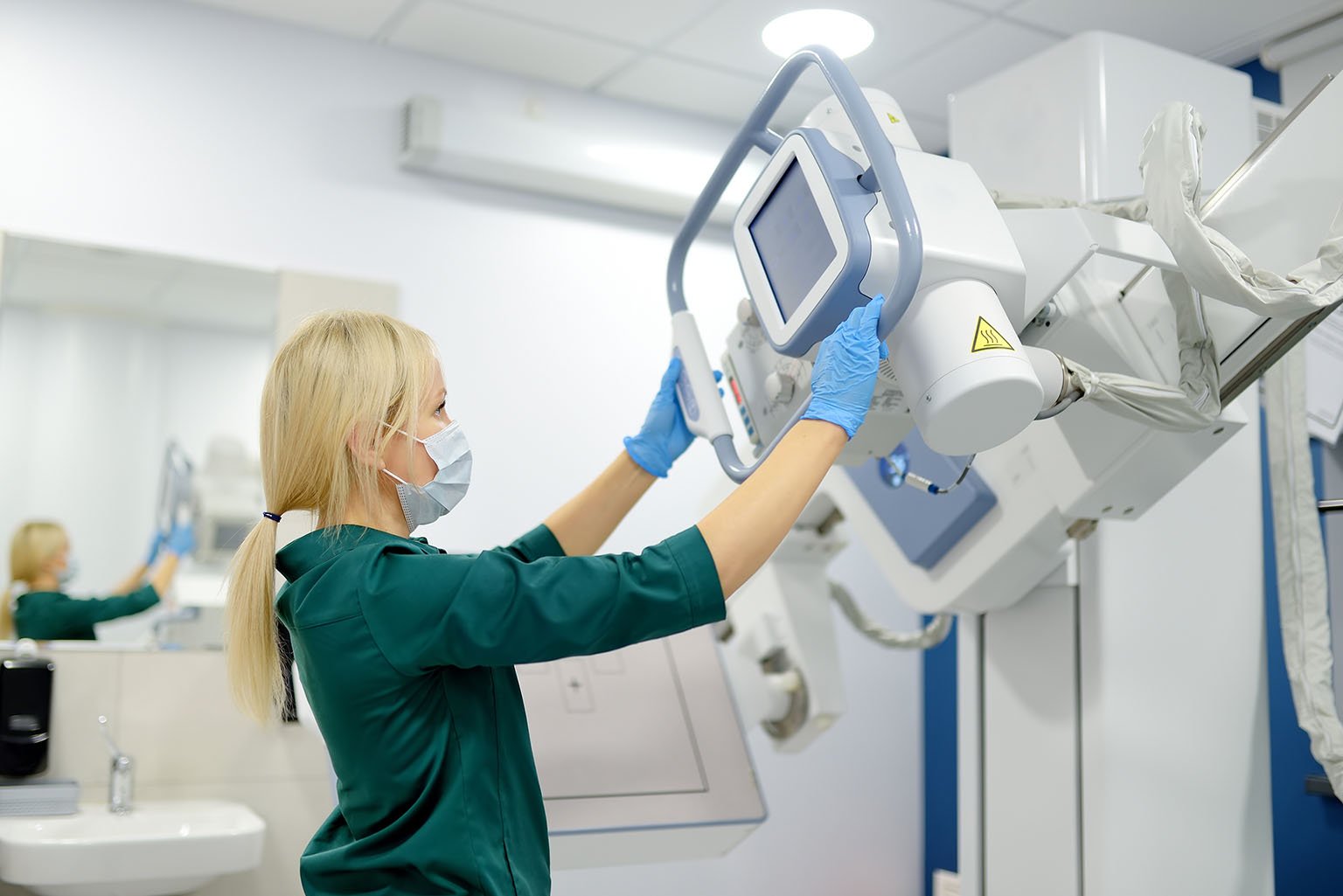When traditional methods no longer delivered results, the Community College of Baltimore County (CCBC) embraced innovation. By integrating Clover Learning’s all-in-one, video-based learning platform, they reimagined how Radiography Physics is taught, and saw scores rise as a result.
The Program
Community College of Baltimore County (CCBC) is home to over 40 training programs for aspiring health professionals, including Radiography Technologists. Students in CCBC’s Radiography Program complete an intensive 22-month course of study to earn their Associate of Applied Science (A.A.S.) degree. To meet the growing demand for Radiography Technologists in the Baltimore area, CCBC’s Radiography Program has steadily increased the number of students it accepts each year, graduating 17 students in 2023.
Starting with the Class of 2022, I mandated the viewing of related Clover Learning videos by attaching attendance points for watching them prior to the time class started. And viola! Test scores went up!” - Erin Phelan, MA, RT(R), CNMT, Medical Imaging Programs Director, Community College of Baltimore County
The Challenge
Increase test scores for the Radiography Physics Course
During their first year, students in CCBC’s Radiography Program take Program Director Erin Phelan’s Radiography Physics course. Many of Phelan’s students are not new to challenging coursework, having already earned an Associate’s or Bachelor’s degree in another field. Nonetheless, Phelan noticed a significant drop off in student test scores in the Radiography Physics course beginning in 2018, a decrease she attributes in part to a cultural shift away from text-based learning.
The Solution
Exchange textbooks for Clover Learning’s video-based Radiography lessons
Drawing on her 19 years of experience as an educator with the CCBC Radiography Program, Phelan developed an action plan to support her students. “I knew I needed to find a product that would better serve how students learn in an ever-increasing visual world. YouTube videos were not cutting it; there were not enough quality content videos that were specific to our industry. So, as part of my Action Plan for the Class of 2021 cohort, I purchased Clover Learning for them as a pilot program.”
Prior to 2021, required resources for the Radiography Physics course included a textbook and a subscription to another registry exam prep resource. However, Phelan and her colleagues were able to replace these resources with Clover Learning for the 2021 pilot, saving each student upwards of $180. Educators also appreciated the switch to Clover Learning for registry exam prep because they preferred the platform’s ability to generate different practice exams.
Beginning with the 2021 cohort, students were introduced to Clover Learning during the first semester, then assigned video lessons throughout their second semester Radiography Physics course. Phelan notes, “I use Clover in as many program courses as I can, and I utilize the system for Registry Review in the last semester, so students really get their money’s worth throughout the entire program.”
The Result
Radiation Physics test scores increased 4.5 percentage points in three years
At first, Phelan saw only a modest increase in her students' test scores. The average of the first two Radiation Physics exam scores for her 2021 pilot cohort was only two points higher (79.9%) than the average score in 2020 (77.8%). But then she had an idea:
“In the syllabus, I clearly state that students will lose one point in attendance for not viewing the assigned video, and it does not take me very long to look this up under the reporting dashboard, which has a convenient search tool.” Sure enough, that did the trick. As soon as students were held accountable for watching the Clover Learning video lessons, Phelan saw a dramatic increase in test scores. Average test scores for the 2022 - 2024 cohorts increased from 82.5% to 84.4%.

Phelan calculated the average of student scores on the first and second exam in the Radiation Physics class for cohorts beginning in 2018. She saw a clear increase in scores once she began requiring students to watch the Clover Learning video lessons, starting with the 2022 cohort.
“They like the videos better than me, I’m telling you,” Phelan jokes, describing her students' impression of their new Clover Learning resource. Her students also enjoy using the self-testing feature available from Clover Learning’s Prep application, which allows both students and educators to quickly generate random or customized sets of practice questions.
Phelan and her colleagues also appreciate the time Clover Learning has saved them from sifting through Radiography physics videos on YouTube. “It’s like the wild west. You’ve got some really bad stuff out there,” Phelan laments. She much prefers Clover Learning’s plentiful library of vetted, high-quality Radiography videos produced in collaboration with leading industry experts: “The quality animated videos on Clover Learning are perfect for all topics in a Radiography program, particularly the harder ones.”


